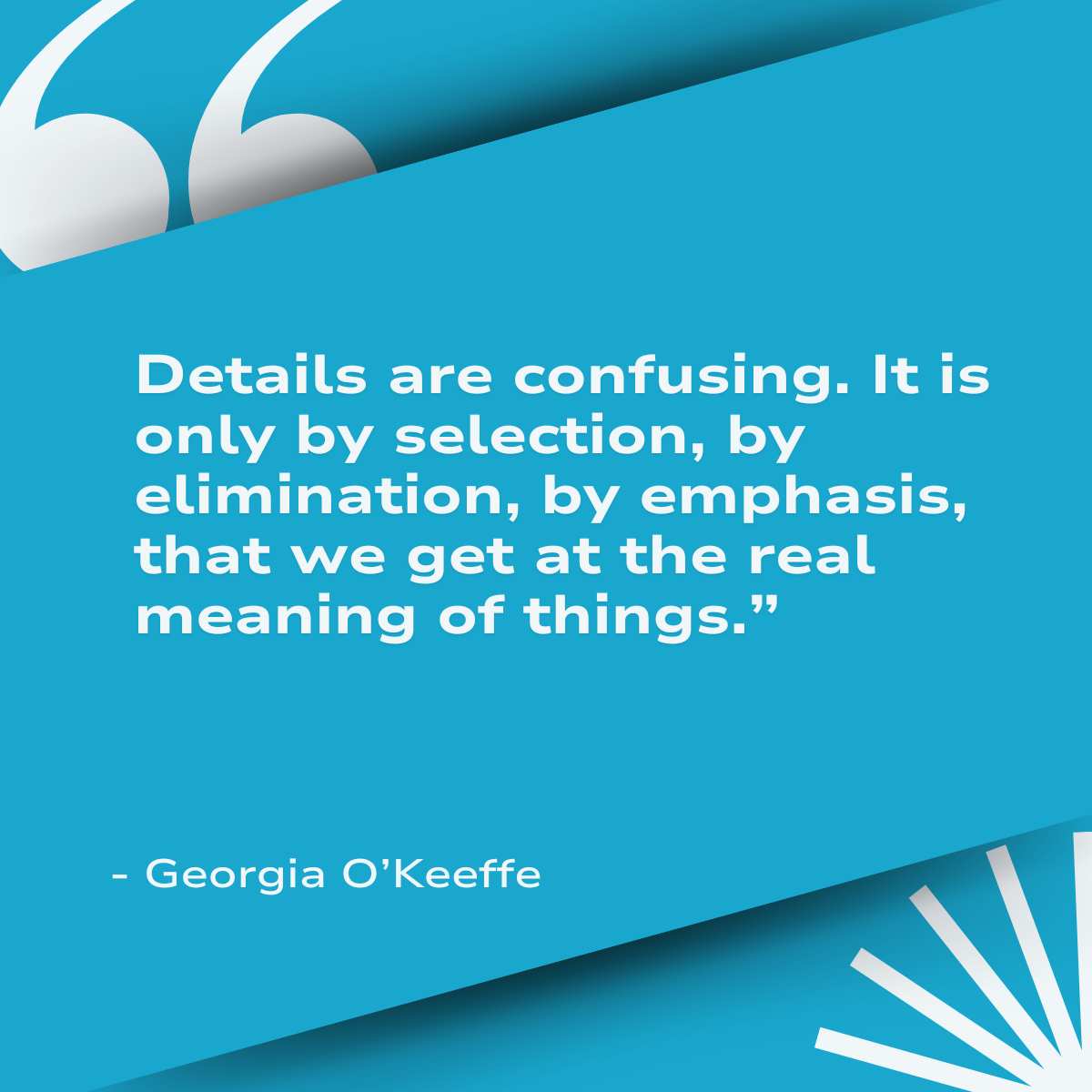Sometimes visual artists can offer wisdom that directly applies to the writing and storytelling craft. So it is with the above quote from Georgia O’Keeffe. Not properly chosen and curated, details can derail your narrative and obscure the emotional power of our message.
Details have the power to drive our message home and heighten their emotional impact. But that power is only unlocked when we employ the three processes O’Keeffe identifies. We have to carefully choose which details to include, which to leave out, and which to really emphasize.
The more intentional we are in the way we use details, the more persuasive our writing will be.
To illustrate what I mean let’s explore the use of details in a story I witnessed and recently shared on LinkedIn.

He sat on the hot DC sidewalk outside a CVS. His bucket seeking donations held just a handful of coins. A young, college-aged woman bent down holding a folded up dollar inches from his face.
“Don’t spend this on drugs,” she intoned. “And don’t buy liquor with it. “I’m giving you this only to buy something healthy to eat.”
Finally, she released the dollar into his bucket.
He reached in, pulled the money out handing it back to her. Calmly but firmly he said “Take back your money. That was disrespectful.“

- Noting that the sidewalk was “hot” heightens the reader’s sense of the man’s difficult circumstances.
- The same is true of noting the bucket held “just a handful of coins.”
- Choosing not to mention the two peoples’ race discourages the reader from seeing the story through a racial lens.
- Describing the woman as “young, college-aged” is interesting. Maybe it lets her off the hook, chalking her behavior up to inexperience. Or maybe it evokes the know-it-all arrogance we all put people through in our college years. But certainly it emphasizes the different social circumstances of the two people.
- The detail of holding the dollar “inches from his face” adds to the menacing quality to the woman’s little speech.
- The detail of her “finally releasing” the dollar into his bucket has a different quality than just saying she “dropped the dollar into his bucket.”
- Noting that the man spoke “calmly but firmly” speaks clearly to his dignity and disposition.
- Not mentioning that the woman’s companions chuckled at the way her interaction unfolded keeps the focus on the man’s dignity not her discomfort.

Here’s an approach you might use to help you examine your use of each detail more closely.
* If the detail propels your narrative forward, keep it. But if it just slows things down or, even worse, drives your story off course, leave it out.
* If a detail adds emotional energy, keep it. But if it drains emotion from this part of your message, let it go.
* Examine if you’ve skimmed over a detail that would have a more powerful impact if you really leaned into it.
* Think through whether you’ve left out a detail that would either sustain narrative momentum or help the reader emotionally engage with your message.
Most of all, remember O’Keeffe’s advice. Details are confusing and you can only unlock their enormous power to persuade by taking the time to select, eliminate and emphasize them in service of your message.









